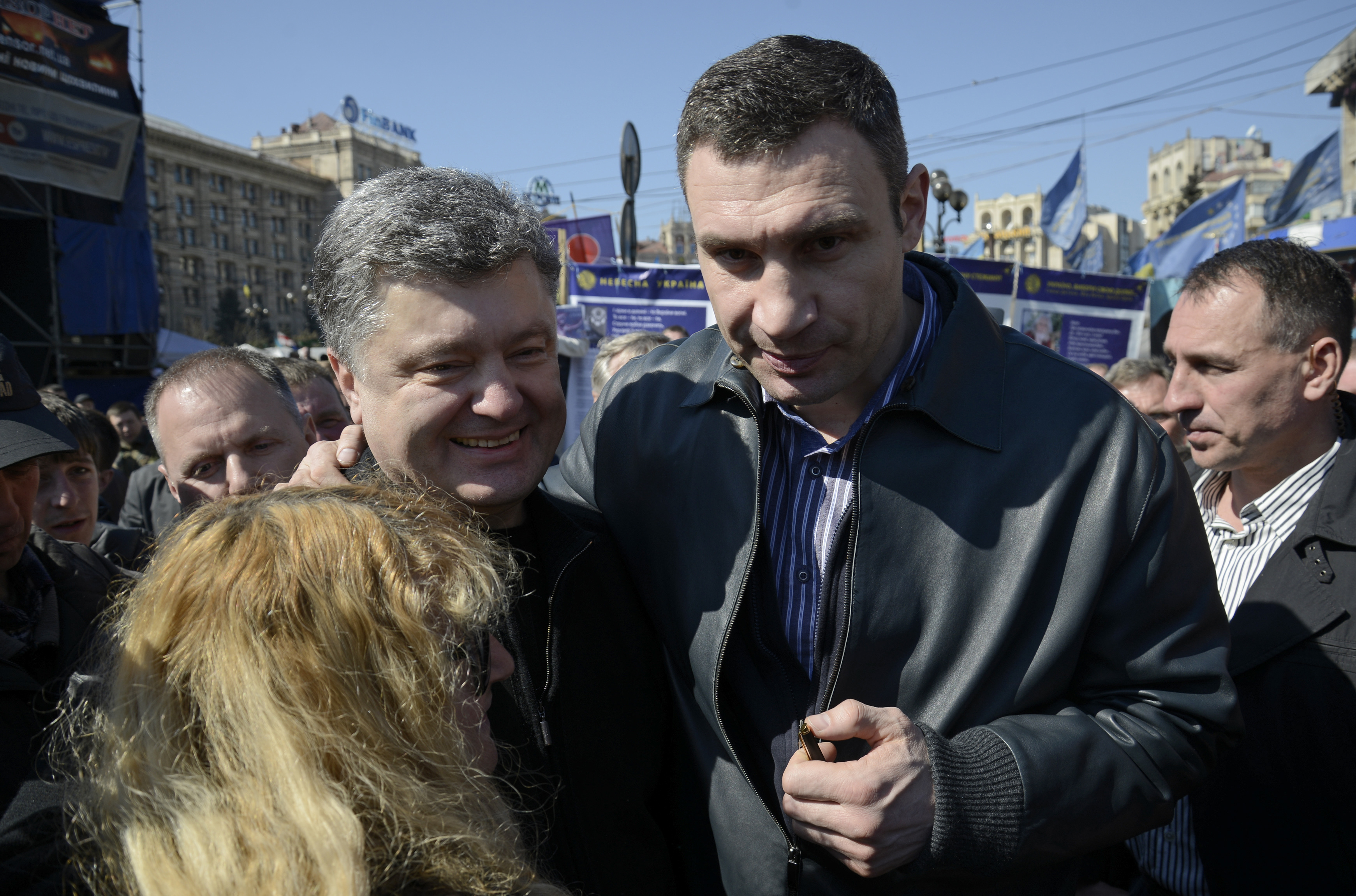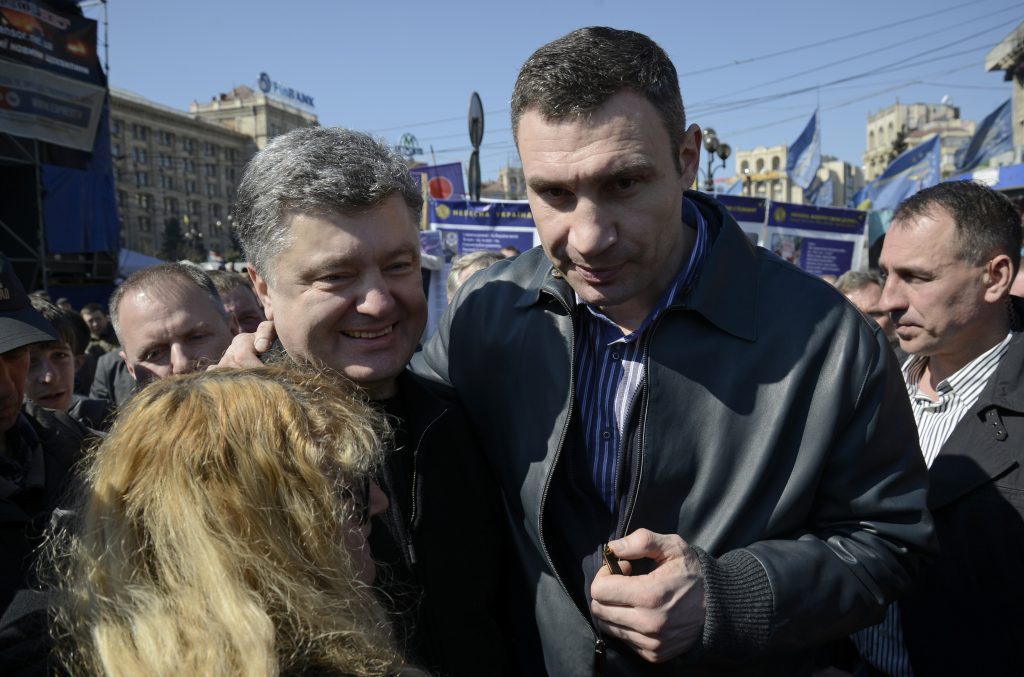
Early Voter Surveys Reflect Anti-Russian, Pro-Independence Mood
Ukrainians will elect a new parliament in exactly thirty days, completing the electoral portion of the political revolution triggered by last winter’s Maidan movement. As the campaign began in recent weeks, two Ukrainian polling organizations conducted surveys that yielded similar numbers on the early mindset of Ukraine’s electorate. The table below averages the results of these two polls to show that President Petro Poroshenko’s political alliance, which includes the Ukrainian Democratic Alliance for Reform (UDAR) of Kyiv Mayor Vitaliy Klitschko, held an overwhelming lead of 41 percent in the surveys, which were conducted from August 23 to September 10.
The other parties registering significant support uniformly favor a strengthened assertion of Ukraine’s independence from Russia. This buttresses expectations of political analysts that the central political change in the next parliament will be exactly that strong, pro-independence consensus.
The divisions in this broad grouping of forces will be over how to pursue that independence—specifically, how much hope to invest in negotiations with Russia and how much to prefer the risk of resuming the war over southeast Ukraine that was suspended in the September 5 ceasefire. The parties that follow Poroshenko’s bloc in the polls—including the Radical Party of Oleh Lyashko (13.4 percent); Civil Position, headed by former Defense Minister Anatoliy Hrytsenko (8.9 percent); and others—largely criticize Poroshenko’s willingness so far to compromise in talks with Russia. The Batkivshchyna Party of former prime minister Yuliya Tymoshenko has dramatized its call for resistance by heading its candidates’ list with the Ukrainian soldier-pilot Nadiya Savchenko, who was captured in the war and sent to Russia to face trial. They argue for a greater readiness to fight the Russians and their proxy forces. That position is of course easier to take for electoral purposes than it is to pursue successfully on the battlefield, notably given Ukraine’s continued state of only partial military preparedness.
Unsurprisingly, Russia’s armed invasions since February—one to annex the Crimean Peninsula and the other to establish de facto Russian control over much of the southeastern Donbas region—have crushed public support for the parties seen as most sympathetic to Russia. The Party of Regions, which for years dominated eastern Ukraine and served as the political machine of the ousted president, Viktor Yanukovych, and the Communist Party, both receive less than the 5 percent of support from voters that on election day will be required for them to win seats via the party-list voting in the Verkhovna Rada.
Ukrainian Voters’ Averaged Preferences, August 23 to September 10*
PETRO POROSHENKO BLOC 41.4 percent
(This includes Poroshenko’s Solidarity party and its ally, the UDAR party of Kyiv Mayor Vitaliy Klitschko.)
RADICAL PARTY (led by Oleh Lyashko) 13.4 percent
CIVIL POSITION (led by Anatoliy Hrytsenko) 8.9 percent
BATKIVSHCHYNA (led by Yuliya Tymoshenko) 7.1 percent
STRONG UKRAINE (led by Serhiy Tihipko) 6.1 percent
POPULAR FRONT (led by Prime Minister Arseniy Yatsenyuk) 6.0 percent
SVOBODA (led by Oleh Tyahnybok) 4.5 percent
COMMUNIST PARTY (led by Petro Symonenko) 3.8 percent
PARTY OF REGIONS (led by Oleksander Yefremov) 2.9 percent
SAMOPOMICH (“Self-Reliance,” led by Andriy Sadovyi) 2.5 percent
*This list averages the results of polls by the Kyiv International Institute of Sociology (KIIS), which interviewed more than 2,000 potential voters from August 23 to September 2; and the Kyiv-based Center for Social and Marketing Research (SOCIS), which polled 2,800 potential voters from September 5 to 10.
James Rupert is an editor at the Atlantic Council.
Image: Petro Poroshenko, left, and Vitaliy Klitschko, center, campaign at Kyiv’s Maidan Nezalezhnosti March 30 in the alliance that produce Poroshenko’s election as president in May. Recent surveys of voter preferences for the October 26 parliamentary election show that the two men’s parties are again combining to lead in the race. REUTERS/Maks Levin

